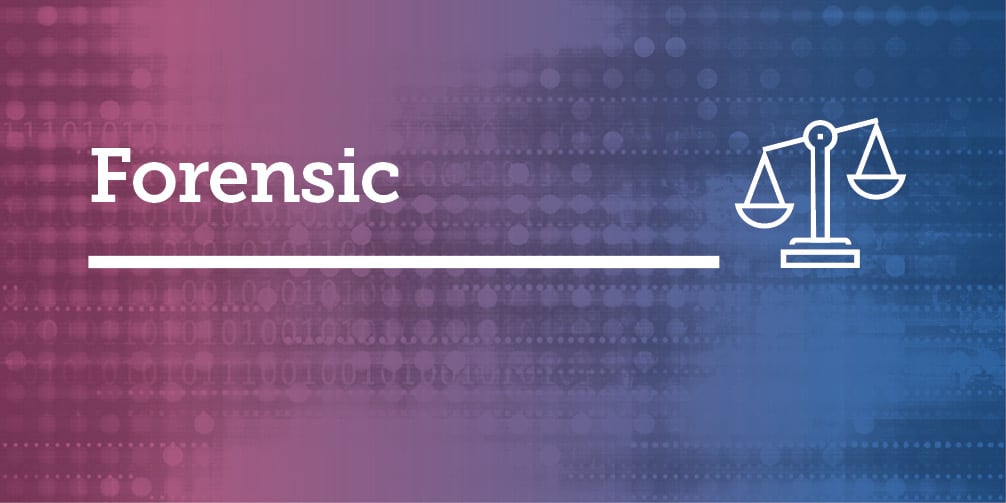Featured Article
Article Title
A Longitudinal Examination of Stepping Up, Stepping Out With Incarcerated Men in Restrictive Housing: An Expansion of the 2021 Pilot
Authors
Ashley B. Batastini - Associate Professor of Forensic Psychology, School of Health Sciences
Kaylee Cook - Department of Counseling, Educational Psychology, & Research, University of Memphis
Alyssa Hoyt - Department of Counseling, Educational Psychology, & Research, University of Memphis
Abstract
The use of restrictive housing as a correctional practice remains a contentious issue and one that has been an increasing target for reform efforts. While some departments are seeing success in implementing large-scale changes, others are held back by limited resources. Stepping up, stepping out (SUSO) is a cognitive–behavioral program for individuals in long-term restrictive housing units with behavioral and mental health challenges and is designed to fit within various institutional structures. SUSO is intensive and takes approximately 10 weeks to complete. Pilot results published in 2021 supported SUSO as a promising intervention for this high-risk population. We present an updated set of analyses that compared pre- to posttreatment outcomes using a larger sample of men who completed the full program (N=133), and examined a subset of individuals (N = 46)with 6-month follow-up data. Knowledge acquisition, ratings of working alliance, and whether client and/or pretreatment factors predicted program completion were also analyzed. With the larger sample, reductions in emotional distress, pro criminal attitudes, and general and reactive criminal thinking were observed from pre- to postintervention. Among the subsample with 6-month data, the largest and most consistent changes were from baseline to follow-up. Although changes in proactive criminal thinking followed a declining trend over time and across analyses, they did not reach statistical significance, suggesting a different or modified mechanism of change for this style. Limitations are discussed along with recommendations for continued program evaluation.
Keywords
administrative segregation, restricted housing, mental health treatment, behavioral health
Summary of Research
“The American Carceral System has been using restrictive housing units (also sometimes referred to as segregation, special housing, or solitary confinement as well as other labels) to manage difficult behavior since the late 1700s… Unit and cell conditions on restrictive housing blocks may be similar across these classifications, but environmental structures and policies often differ significantly from institution to institution… Increasing attention has been paid to reforming the use of restrictive housing especially for certain subgroups like those with serious psychological impairment… However, the use of restricted housing is not likely to be abolished any time soon... First, serious acts or threats of violence may leave correctional institutions little to no choice other than to temporarily physically contain the person. Second, implementation of systemic reforms is dependent on available resources; many jails and prisons lack the necessary mental health and custody staff, spacing, and/or funding.
Stepping up, stepping out (SUSO) is a cognitive-behavioral based program tailored for individuals in or at-risk of restrictive placements due to disruptive behaviors. SUSO addresses mental health and criminogenic needs using a flexible format such that it could be used in conjunction with step-down programs or as a largely self-directed program… The SUSO protocol, which includes 45 interactive handouts across the following nine modules, is detailed:
1. Understanding change and making it happen: an introduction
2. Surviving segregation: what to expect and how to cope
3. Suicide and self-injurious behavior: protecting you from you
4. Understanding my emotions: identifying and dealing with anger, fear, and other frustrating feelings
5. Exploring my mental distress and criminalness: where it comes from, what it looks like, and how to recognize it
6. Managing my mental distress and criminalness: improving functioning and preventing relapse
7. Seeking supportive allies: finding helpful others among the crowd
8. Integrating “us” and “them”: improving inmate-staff relations
9. Roadmap to recovery: creating your relapse prevention plan…
These authors also reported preliminary results from a sample of 39 men who completed the full program and found promising reductions from pre- to post intervention on self reported emotional distress and procriminal attitudes. However, changes in criminal thinking… were not statistically significant. Expanding on this pilot, the current evaluation reanalyzes data using a larger sample of program completers and provides a first look at maintenance of treatment gains after 6-months… Importantly, this study reflects the programmatic outcomes expected when ideal scientific controls and standardized implementation are not possible. In other words, what changes in client attitudes, thoughts, or emotions could facilities expect to observe when implementing SUSO in the field?...
Data were obtained on 329 men incarcerated within a maximum security prison in the Missouri Department of Corrections (MDOC) who were eligible and enrolled in the SUSO program. Of these 329 men, 173 (52.6%) successfully completed all program modules” (p. 48- 49).
“Although SUSO is administered individually, the counselor contained enrollment to smaller cycles to make implementation and progress tracking more manageable. Earlier cycles included approximately five to eight individuals. As word-of-mouth about the program spread, cycles expanded to 15–20 individuals enrolled at one time… clients complete several measures at pre-, post-, and 6 months after program completion on emotional distress and criminal thought processes. Clients’ scores on these measures are used for therapeutic purposes to show their individualized risk factors and whether they made or maintained improvements as treatment progresses….Measures of emotional distress and criminal cognitions are administered to all enrolled clients prior to starting the SUSO protocol. Those who finish the program are asked to complete these measures again posttreatment and 6 months later…” (p. 50).
“Results corroborated SUSO as an effective intervention for reducing emotional distress and procriminal attitudes, which appeared to be maintained (and in some cases, further improved) up to 6-months after the intervention. With a more robust sample size…, reductions in general and RCT were also observed from pre- to posttreatment… criminal thinking styles overall and proactive styles in particular, appear to be slower or more difficult to change than other psychological outcomes of interest… Thus, while SUSO is capable of targeting criminal thinking, modifications may still be needed to see more consistent and immediate effects, particularly with regard to proactive forms…
Given people with mental health symptoms are disciplined more frequently than those without symptoms, having an option like SUSO is important. Collectively, present analyses and the original pilot suggest SUSO maybe a good choice for facilities with and without budgetary or staffing resources” (p. 53- 54).
“Unfortunately, restrictive housing units are typically chaotic yet highly regulated and securely managed, which may mean a controlled experimental design would limit our understanding of actual program feasibility. Nonetheless, randomized control trials that directly compare SUSO to treatment as usual or other mental health services available on the unit with larger sample sizes, more explicit checks on treatment adherence, and standardized data collection procedures would more clearly isolate the impacts of SUSO” (p. 55).
Translating Research into Practice
“The reductions in emotional distress, which included suicidality, across all time points and for both sets of analyses are worth underscoring for a few reasons… decreasing emotional distress over the course of treatment and in the months after suggests SUSO can offer correctional institutions a viable option to provide mental health support for individuals in restrictive housing units, especially those serving lengthier stays in administrative segregation, that fits within current institutional structures…” (p. 54).
“To improve individual well-being and institutional safety, more adaptive thought patterns must lead to more adaptive actions and choices. For example, future evaluations may include information on the frequency and seriousness of posttreatment disciplinary infractions, readmission to restrictive units after release to general population, conduct reports from unit officers or other staff, or compliance with psychotropic medication…” (p. 55).
“Future program implementation and evaluation might also benefit from the use of incentives [for] staff who take leading roles in service delivery, data collection, or who help solve unexpected implementation issues. Additionally, bringing multiple perspectives and voices (e.g., program developers, the research team, clinicians, correctional administration, and correctional officers) into the same room by facilitating focus groups before, during, and after active data collection may improve buy-in on the front-end, create a greater sense of unity toward institutional goals and equity among staffing units, and help resolve roadblocks more quickly…” (p. 56).
Other Interesting Tidbits for Researchers and Clinicians
“Among other individualized needs, institutional or systemic issues may also play a role. For example, insufficient staff training to recognize and deescalate symptoms of mental distress can result in an unnecessary reliance on restrictive housing to contain behavior. Similarly, for those with unmanaged trauma symptoms, reactive responses to trauma (e.g., hypervigilance) may lead to or be labeled as behavioral misconduct. By their design, correctional environments tend to heighten the risk of traumatization or retraumatization, which has led to increased calls for trauma-informed care practices. Further, some research shows an increased risk of placements for incarcerated persons of color and other minoritized groups, possibly due to biases in how these individuals are managed by staff (e.g., more frequently responding to misconduct by Black people)... Therefore, we encourage systemic changes that shift the culture away from punishment as the default response to disruptive behavior” (p. 55).
“These authors highlight the need for researchers to consider that any research evaluation in this environment is an added labor for staff, and excess work could be perceived as a cost to institutional security. Thus, respect, flexibility, and humility are needed when working alongside correctional personnel to implement and evaluate newer mental health interventions” (p. 56).
Additional Resources/Programs
As always, please join the discussion below if you have thoughts or comments to add!





























